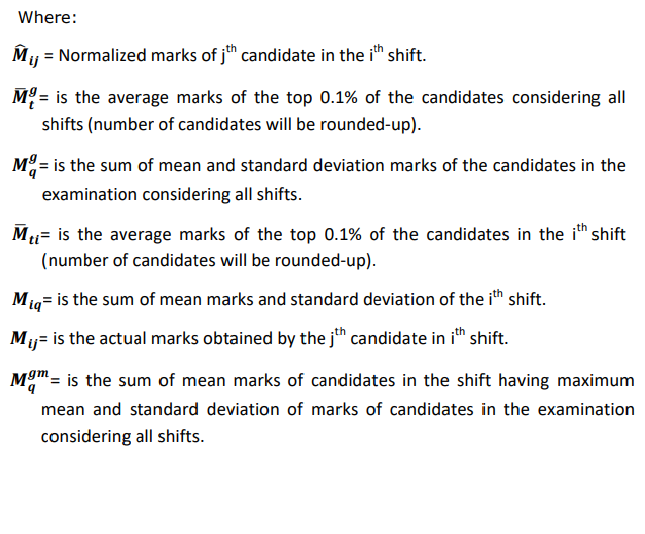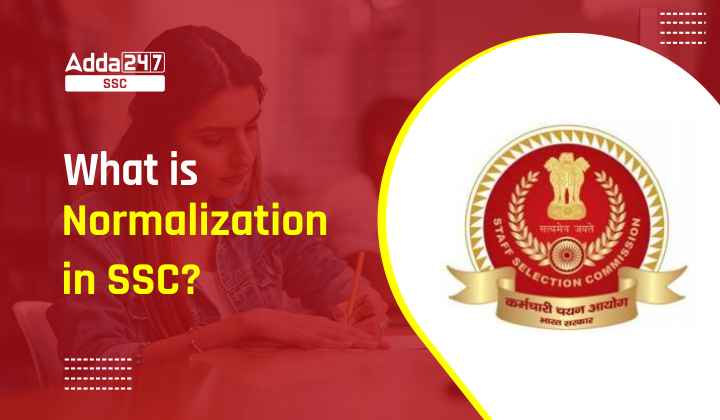The Staff Selection Commission is responsible for the appointment of government employees at the Group B, C and D levels across various ministries and departments. The commission carries out this responsibility by conducting various recruitment processes adapted to the qualifications of the candidates and the requirements of the government departments. Every year, it announces thousands of vacancies which enables lakhs of candidates to take the exams at various examination centers and in multiple shifts across the country.
This demands a need for a fair marking system that justice to all the candidates’ performance in the exams. The commission has adopted the normalization process of determining the marks and merit list. In this article let us take a look at the different aspects of normalization and how the SSC has integrated it in the selection process.
What is Normalization?
Normalization is a term that many government job aspirants must have heard in various examinations. What is Normalization? Staff Selection Commission normalizes the scores of candidates for the tests conducted in multi-shifts to take into account any variation in the difficulty levels of the question papers across different shifts.
Normalization means equalizing the scores of candidates who appeared in multiple shifts based on the difficulty level. As SSC exams are conducted over multiple shifts Let’s discuss how the scores are normalized and why is it essential in exams.
Normalization Formula
SSC uses the normalization formula to calculate the final score of a candidate based on the difficulty of its shift. The formula is based on the average marks scored in a particular shift that determines the difficulty level. The normalization is based on the fundamental assumption that “in all multi-shift examinations, the distribution of abilities of candidates is the same across all the shifts”.
This assumption is justified since the number of candidates appearing in multiple shifts in the examinations conducted by the Commission is large and the procedure for allocation of examination shifts to candidates is random. The following formula will be used by the Commission to calculate the final score of candidates in the multi-shift examinations:


With the introduction of SSC CHSL and CGL normalization, students need not worry if their shift is difficult as compared to others. For example, if the average marks scored by students in the first shift is 120 marks out of 200 and the average marks scored by students in the second shift is 100 marks out of 200 marks, then the marks will be normalized as the second shift was difficult.
Why is normalization needed?
Normalization in Scores was a unison demand by aspirants as Exam levels in different shifts often seem to be varied. Some aspirants with hard luck fall for the difficult question set in the Exam whereas others get an easy level Question Set comparatively. Therefore, this brings a disparity and causes muddling in the mindset of candidates in final exam merit thus begetting dissatisfaction and impiety in the Commission.
Where several aspirants are already aware of the SSC Normalization process, there seems to be a good number of aspirants for whom normalization in the score is almost a ‘never heard before the term’.
Many a time aspirants come out with this question that they happened to appear for the shift in which the question set was of difficult level, either it being Quantitative Aptitude Section where the question might be more lengthy and calculative in some particular shifts or General Awareness Section where candidates might find most of the questions invincible or English Language Section where some shifts might bring out a typical and intricated questions, and in such case are not those candidates at a disadvantage over those candidates who luckily got an easier level Paper Set and thus prone to failure.
In such a scenario normalization of marks is the most effective tool to clear any dispute between the difficulty levels of papers. Because it is near to impossible that all Exam Shifts Paper Sets would belong to an identical level and nature of questions.
The organization may add a mark or two to the total score of the candidate if the paper of his shift was very difficult in comparison to other shifts or may deduct a mark or two in the reverse scenario subject to their rules, formula, and guidelines for normalization. The normalization process is based on a formula and based on a few other parameters decided by the authority, the Exam organizing committee derives the formula for calculating the normalized marks for the multi-session papers. For different exam patterns, there is a different formula for the normalization of marks. To bring transparency, win the faith of candidates, maintain the sanctity of the Commission, and conduct a fair competition, Normalization in Score is a remedy.
How does SSC CGL Normalization Work?
The SSC made a transition from pen-and-paper mode to Computer-Based Test mode in 2016 and has updated the exam pattern for the CGL Exam. The commission has officially implemented the normalization process as mentioned above in 2019. The need for this arose when the candidates felt that some fundamental changes were required in the marking system as the level of question papers in different shifts varied widely.
Since then, the SSC has attempted to minimize the number of shifts for the CGL exam and keep the level of the papers as similar to each other as possible. Whenever a result for the SSC CGL exam is published, the category-wise cutoff for the normalized score of the candidates is also published along with it.
Conclusion
SSC CGL Normalization is an important part of the recruitment process and determines the final selection of the candidates for the various posts. In the scorecards made available by the commission, the candidates can observe the raw score and the normalized score to see its effect on the scores. The candidates can go through the details given above to understand the process and its use in the selection of suitable candidates.



 Upcoming Government Exams, Complete Govt...
Upcoming Government Exams, Complete Govt...
 Govt Jobs 2025, Latest Upcoming Governme...
Govt Jobs 2025, Latest Upcoming Governme...
 SSC Exam Calendar 2025–26 Out, Check All...
SSC Exam Calendar 2025–26 Out, Check All...


